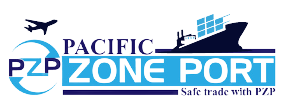
Alex Young
Shipping tips & tricks for a smoother delivery.
Mastering Ship from China to San Francisco Cargo Route
Forget the complexities! Ship from China to San Francisco becomes a breeze with this expert guide. As trade between these two giants flourishes, businesses and individuals are diving into the world of international logistics. This guide empowers you, whether you’re a seasoned importer or a curious newcomer, to navigate the process of ship from China to San Francisco with confidence. Let’s optimize your China-San Francisco shipment!


Ship from China to San Francisco Cargo
1. Understanding Shipping Methods
The journey to ship from China to San Francisco isn’t just about distance it’s about selecting the perfect shipping method for your needs. Here’s a breakdown of your options to help you conquer this logistical battlefield:
Air Freight: The Speed Demon
- Need lightning-fast delivery? Buckle up for air freight! It reigns supreme in speed, delivering your goods in a mere 2-7 days when you ship from China to San Francisco. This speed is perfect for perishables, urgent shipments, or high-value cargo. However, this speed comes at a price air freight is the most expensive option.
Sea Freight: The Cost Champion
- Looking for the most budget-friendly way to move large volumes? Opt for sea freight! While the voyage to ship from China to San Francisco can take 2–6 weeks, depending on the route and carrier, it offers significant cost savings compared to air freight. This method is ideal for bulk, non-perishable goods where speed isn’t a major concern.
Rail Freight: The Stealthy Middle Ground
- Not in a rush but want to avoid air freight costs? Rail freight might be your secret weapon. It offers a balance between speed and cost when you ship from China to San Francisco, often taking longer than air freight but less time than sea freight. Consider rail freight for specific goods that can handle the extended travel time, especially when cost savings are attractive. Remember: When choosing your shipping method, consider factors like the size and weight of your cargo, the urgency of delivery, and your budget. Don’t hesitate to consult with a freight forwarder to get expert advice on the best option for your specific needs.
Remember: When choosing your shipping method, consider factors like the size and weight of your cargo, the urgency of delivery, and your budget. Don’t be afraid to consult with a freight forwarder to get expert advice on the best option for your specific needs.
2.Transit Time for Ship from China to San Francisco
When considering sea freight, one of the most crucial factors to account for is the transit time of a cargo ship. Typically, it takes around 2 to 3 weeks to ship from China to San Francisco. However, this timeframe can vary depending on the specific port of departure, shipping route, weather conditions, and the efficiency of the chosen carrier.
3. Navigating Customs and Regulations
Don’t Get Stuck at the Border Checkpoint
Shipping across borders can feel like entering a new territory, and customs regulations are the gatekeepers. Here’s what you need to do to ensure a smooth and swift passage for your China-San Francisco shipment:
- Be a Duty Detective:
Don’t get caught off guard by surprise import fees when you ship from China to San Francisco! Before your shipment departs, act like a detective and uncover the applicable duties and taxes for your goods. These can vary depending on the product type and its origin (China in this case). Resources like the U.S. Customs and Border Protection (CBP) website can be your allies in this investigation. Knowing these costs upfront helps you factor them into your overall budget and avoid any surprises later.
- Paper Power:
Mastering the Documentation Maze
Imagine your customs documents as a passport for your goods. Ensure all the necessary paperwork is to avoid delays or even rejections. Here’s your essential checklist:
- Commercial Invoice:
This acts as a detailed receipt for your shipment, including a clear breakdown of product descriptions, quantities, and values.
- Packing List:
Think of this as a map for customs officials. It provides a precise breakdown of the contents of each package, including item descriptions, weights, and dimensions.
- Certificate of Origin:
This document verifies where your goods were produced. It’s crucial for determining the applicable duty rates.
- Additional Documentation:
You might need additional documents like safety certificates or licenses, depending on the specific product category. Check with your freight forwarder or the CBP website for specific requirements.
Remember, even a single missing or inaccurate document can lead to delays and frustration. Be meticulous and ensure all your paperwork is complete and up-to-date.
- Become a Legal Eagle:
Understanding U.S. Regulations
Not all goods are created equal, and U.S. regulations have specific requirements for certain products. Don’t let your shipment get detained at the border! Familiarize yourself with any relevant U.S. laws regarding product safety, labeling, and other legal aspects. Resources like the CPSC (Consumer Product Safety Commission) website can help understand these regulations. By ensuring your goods comply with these requirements, you’ll guarantee a smooth and legal passage through customs
4.Main Ports in China for Shipping to San Francisco
China is home to several major ports that serve as hubs for international shipping. The main ports in China that facilitate ship from China to San Francisco include:
- Port of Shanghai: As one of the busiest ports in the world, the Port of Shanghai handles a significant volume of cargo destined for San Francisco.
- Port of Shenzhen: Another key shipping hub, the Port of Shenzhen is known for its efficiency and modern infrastructure.
- Port of Ningbo-Zhoushan: This port is one of the largest in terms of cargo throughput and is a vital point of origin for shipments heading to San Francisco.
5. Selecting Your Logistics Champion
Partnering for Success
Choosing the right logistics partner is like selecting a champion fighter for your China-San Francisco shipment. A reliable freight forwarder acts as your ally, providing the muscle and expertise to navigate the complexities of international shipping. Here’s why a good partner is crucial:
Route Reconnaissance:
- Experienced forwarders are like seasoned scouts, constantly analyzing routes and uncovering the most efficient paths for your cargo. They consider factors like transit times, costs, and potential bottlenecks to ensure your shipment reaches its destination swiftly and cost-effectively.
Cargo Consolidation:
Strength in Numbers
- Imagine sharing a massive shipping container with other businesses heading to San Francisco. This is the power of cargo consolidation! Your forwarder can combine your shipment with others, maximizing container space and significantly reducing your shipping costs. It’s a win-win for everyone involved.
Tracking Triumph:
Knowing Your Shipment’s Every Move
- Staying informed about your shipment’s whereabouts is crucial. A good logistics partner will provide real-time tracking capabilities and regular updates. Imagine a live map showing your cargo’s location, estimated arrival time, and any potential delays. This level of transparency allows you to plan accordingly and manage your expectations effectively.
6. Packaging and Handling
Building a Fortress for Your Goods
Proper packaging and handling are the foundation of a safe and successful journey for your goods. Think of it as building a fortress to protect your cargo from the rigors of international travel:
Packaging Materials:
Choosing the Right Armor
- Don’t skimp on the packaging! Invest in high-quality materials that can withstand the bumps, vibrations, and potential stacking of international shipping. Cardboard boxes, wooden crates, and specialized packaging for fragile items are all essential tools in your arsenal.
Labeling:
Clear Communication is Key
- Clear and concise labeling is like a beacon for customs officials and delivery personnel. Ensure all packages are marked with the recipient’s address, contact information, and any special handling instructions like “fragile” or “this side up.”
Secure Packing:
No Room for Movement
- Imagine your goods experiencing a rollercoaster ride! To prevent damage when you ship from China to San Francisco, secure your cargo firmly within the packaging. Use dunnage materials like packing peanuts, bubble wrap, or foam inserts to prevent items from shifting and colliding during transport.
7.Insurance and Risk Management
Protecting Your Investment
International shipping isn’t always smooth sailing. Unexpected events can occur, so consider securing insurance coverage to act as a safety net for your investment:
Damage Control:
- Accidents happen, and insurance can be a lifesaver if your shipment is damaged during transport. Coverage can help recoup financial losses and ensure your business isn’t left holding the bag.
Theft Prevention:
- Unfortunately, theft is a potential risk during shipping. Insurance can provide peace of mind and financial protection if your shipment goes missing.
Delaying the Downside:
Delays can disrupt your business flow and cause financial setbacks. Insurance with delay coverage can provide compensation for unexpected hold-ups, mitigating the financial impact of these unforeseen circumstances
8. Mastering the Cost Battlefield
Strategies for Budget Champions
Managing costs is a crucial aspect of conquering the China-San Francisco shipment. Here are some battle tactics to keep your budget in check:
Negotiate Like a Pro:
Don’t hesitate to negotiate with your logistics partner for favorable rates when you ship from China to San Francisco. Research average rates and be prepared to discuss your specific needs and potential for recurring business.
Consolidation: A Double-Edged Sword for Savings
Remember cargo consolidation? While it can significantly reduce costs, ensure you’re not compromising on delivery timelines. If speed is a major concern, consolidation might not be the best strategy.
Compare Quotes: Seeking the Best Value
Don’t settle for the first quote you receive! Get quotes from multiple carriers and forwarders to compare pricing structures and identify the best value for your specific shipping needs. A little comparison shopping can go a long way in saving you money.
Conclusion: Your China-San Francisco Shipment Awaits!
Shipping goods to ship from China to San Francisco can be a rewarding experience, but it requires careful planning and strategic execution. By understanding the various shipping methods, navigating customs regulations, and partnering with the right logistics provider, you can optimize the entire process. Remember, meticulous packaging, proper insurance coverage, and effective cost-management strategies are all essential elements for a successful shipment. With this comprehensive guide and a little planning, you can confidently embark on this international shipping adventure and ensure your goods arrive in San Francisco safely and on time.

